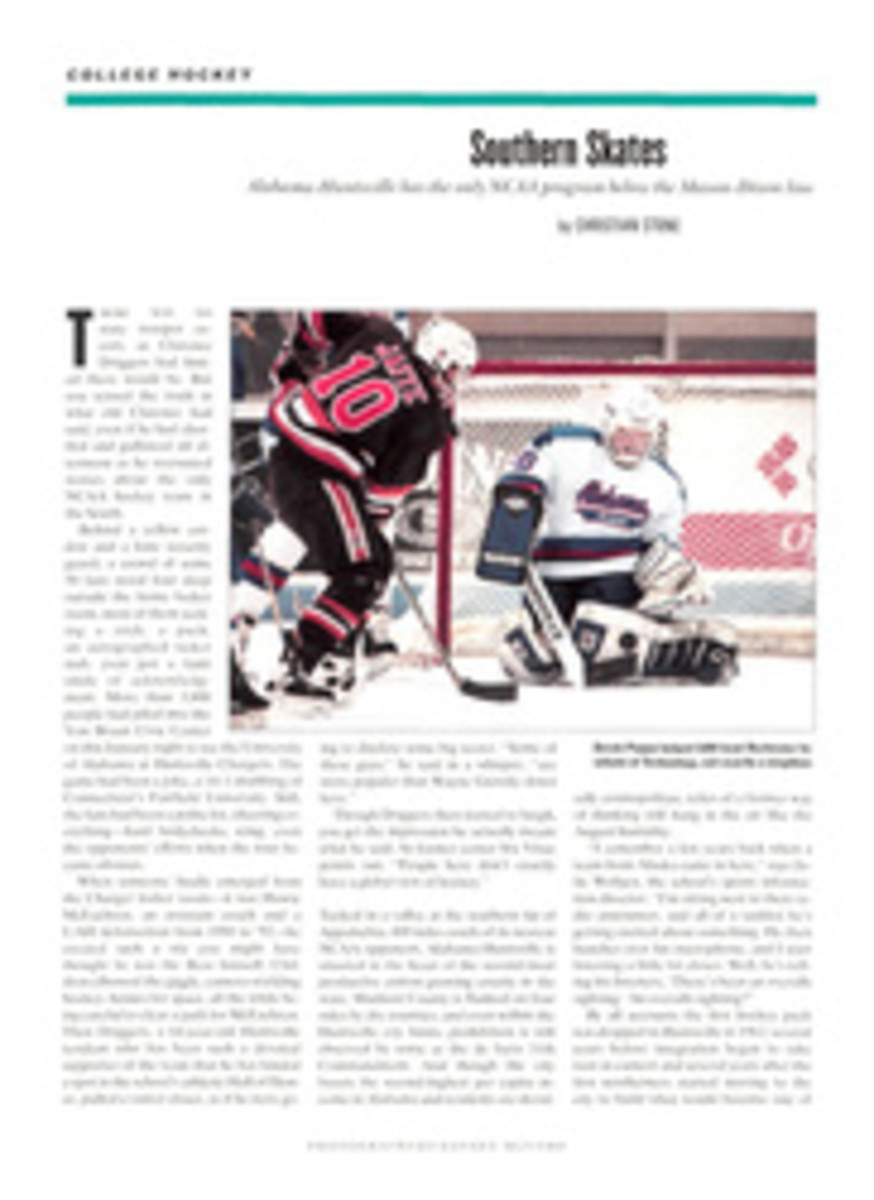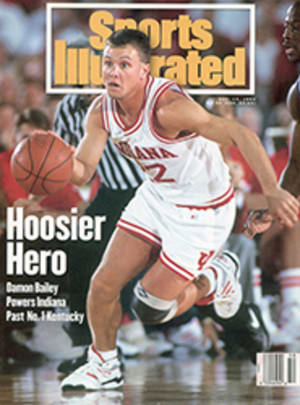
War of the Wheels
If someone was to remake Marlon Brando's The Wild One in Boulder, Colo., the guys in the motorcycle gang would be wearing spandex shorts and riding bicycles. At least that's what one would expect, given the reputation of certain cyclists in the communities just outside this fitness mecca.
Boulder is a city that revels in bicycling. It has nearly 100 miles of bike paths, and seven out of every 10 residents own bikes. The shaved legs of world-class cyclists line up in grocery stores and health-food restaurants.
There is a dark side to Boulder's bicycling force, however, one that is experienced twice a week by residents of the nearby rural town of Hygiene. (Yes, they've heard every conceivable joke about clean living.) Throughout much of the year, on Tuesday and Thursday evenings, a group of often more than 100 cyclists streaks out of Boulder on a training ride that takes them right through the T intersection that is downtown Hygiene (pop. 265).
Bicyclists call this twice-a-week excursion the Bustop Ride—the name comes from a Boulder topless bar whose parking lot marks the beginning of the route. Just about every famous bike racer who has trained in Boulder has taken part in the Bustop, which offers anyone who shows up a chance to ride with bicycling's big boys and girls. "I heard about it before I moved here," says Scott Moninger, who rides professionally for the Coors Light team. "It's got top pros, good riders, and it is fast."
That it is. Riding inches apart, participants cover 40 or 50 miles in about 90 minutes, sometimes reaching speeds of 45 mph. Professional cyclists astride $4,500 bikes can be seen alongside teenagers whose determination and leg power often compensate for their less expensive sets of wheels.
The very qualities that make the Bustop Ride appealing to bicyclists drive the locals nuts. Boulder County residents claim that the cyclists take over the two-lane roads and refuse to let motorists pass, blow past stop signs and display a towering arrogance toward anyone not on two wheels.
"They're terrible, and they have a terrible attitude," says one woman who lives south of Hygiene. "They won't ride single file when you drive up behind them. I've been flipped off [given the bird] and called names I wouldn't call anyone." Ken Sadar, a farmer and volunteer fireman in Hygiene, says, "I've seen them not even get out of the way of a fire truck."
Under Colorado law, bicyclists can ride two abreast, but if a motor vehicle begins to overtake them, they must ride single file on the right side of the lane. Furthermore, bike riders must obey stop signs and traffic signals. But it's hard to do all that and make a good showing in the Bustop.
Jim Smith, a lieutenant with the Boulder County Sheriff's Department, has heard complaints about the Bustop Ride for approximately 15 years. Too many times, he says, road hogging and horn blowing have escalated beyond traffic offenses. "We've had bicyclists assault ed and motorists assaulted," he says.
The Bustop Ride is difficult to police because it is essentially unorganized. No bicycle club sponsors it. There are no leaders. People just show up at 5 p.m. and ride. Participants have no control over who takes part and whether he or she obeys the law. But because the ride is really an unofficial race, anyone who obeys the law tends to get left in the dust. Tickets cost cyclists only $16 and, of course, do not go on the recipient's driving record.
Efforts to crack down on this Tour de Hygiene reached their peak on Bastille Day in 1987, when the Colorado State Patrol and the Boulder County Sheriff's Department used an airplane, video cameras and eight or more police cars to bust the Bustoppers. "We wanted to show the community that we were serious," says Smith. "We had enough complaints and observation to show that this was a huge nuisance, and we wanted to document exactly what the problems were."
The increased enforcement has convinced some riders that they are being harassed. Roy Knickman, a member of the Coors Light team until he retired this year and a professional rider for nine years, says he has ridden the Bustop eight times in eight years and has been pulled over four times. "I shy away from it," he says. "The harassment tactics work with me."
Other cyclists also feel that they are the victims. Thomas Knox, who rides for the Moots Titanium Cycles team, participates in the Bustop every two or three weeks and has been ticketed three times for failure to obey the bicycling code. "Twenty-five to 50 percent of the riders are all over the road," he says. "I have no problem with the police pulling over riders who break the law." But what happens all too often, according to Knox, is that a deputy sees a bunch of bicyclists run a stop sign, then pulls over the entire pack somewhere down the road and gives out tickets indiscriminately.
People on both sides of the conflict offer varying solutions. One is to widen the shoulder of the roads to six to eight feet. Another is to require bicycles to have license plates, and a third suggests police escorts for the Bustop Ride. Most recently, three Colorado cycling groups proposed closing off a 1.1-mile block of Boulder's streets once a week for races. So far, none of these seem likely to happen anytime in the near future.
Standing outside the Hygiene Cafe, farmer Russell Zweck echoes what those on both sides of the issue have said: "People have to learn to live with each other." As he finishes speaking, three spandexed bicyclists cruise past the Hygiene stop sign.
"Now look at that," he quickly adds. "There go three of the sons of bitches right there!"
TWO PHOTOS
CARL YARBROUGH
Some Bustoppers (above) consider pesky stop signs to be optional.
Jeff Bradley, a free-lance writer who lives in Boulder, always obeys traffic laws.

